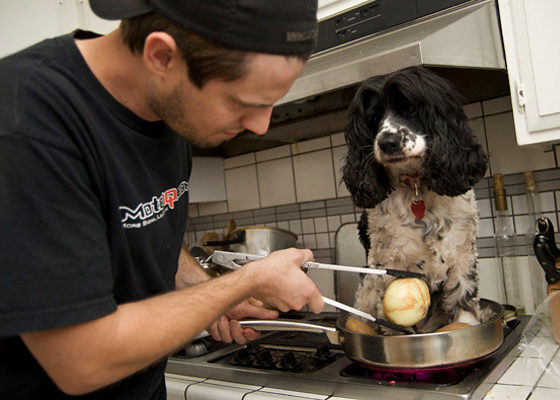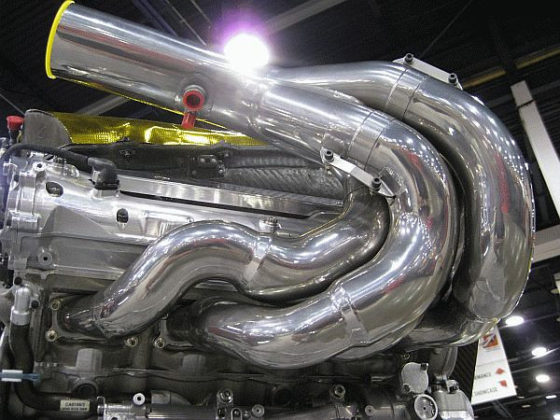,
 |
 |
| The intake and exhaust ports after being opened and smoothed. As you can see to some degree here, the ports are opened up all the way through, not like the offerings from other Ruckus tuners that are only opened up in the easy to reach areas. This is true craftsmanship! |
To create a quench zone, Dan welded up the area of our head’s combustion chamber on the opposite side of the spark plug. He then rough shaped the chamber to have the quench area with a die grinder and rough milled the head. Dan then ported the intake and exhaust using a die grinder and a flex shank cable drive tool. This enabled Dan to be able to port the GET’s long and U shaped intake port all the way through and to reach into the tightest areas of the ports. All other ported Ruckus heads on the market only have pocket and entry porting as not too many people have to tools and skills needed to port the tiny and convoluted GET head. Dan kept most of the porting to the roofs of the ports to keep velocity high and overall port volume low. This is important for a wide powerband and for a little 50cc engine, you can’t afford to lose much low end torque.
 |
| Here is the combustion chamber with the welded up quench area, Singh turbulence grooves and the 3 angle valve job. Note how opened up the ports are and how perfect the valve seats match the ports. You can bet this flows a lot better than stock and makes the other ported heads on the market look like a joke. The pits you see are porosity in the the welds. Its hard to weld cast aluminum perfectly. Look at the extremely smooth deck surface. Its a lot smoother and flatter than stock and you can bet that the head gasket is going to seal. Compare this to the stock chamber on the first page. |
Next Dan unshrouded the valves on the combustion chamber side. This is grinding away the parts of the combustion chamber that come roughly within ¼ of the valve’s diameter from the edge of the valve. This greatly improves flow, especially low lift flow which is the most crucial in making power as the valve spends a lot of dwell time at low lifts. With the chamber unshrouded, Dan did the finish shaping and polishing to the chamber leaving us with a shallow kidney bean shape. This shape is proven on two valve motors to be efficient and fast burning. Look at any NASCAR head and you will know what we are talking about. In addition we added some Singh grooves. The use of these grooves has been pioneered by Dr. Somender Singh. The grooves enhance the turbulence producing action of the quench areas by producing jets of the mixture coming from the quench areas that produce even more turbulence for a superior burn. The use of Singh Grooves in a GET engine was pioneered by Thundersruck on the Total Ruckus forum and we got the idea from him.
 |
| The stock valves have a big seat angle and a rough surface finish, not the greatest for good flow. |




1 comment
Y’all sell these motors pre assembled? Would love one.